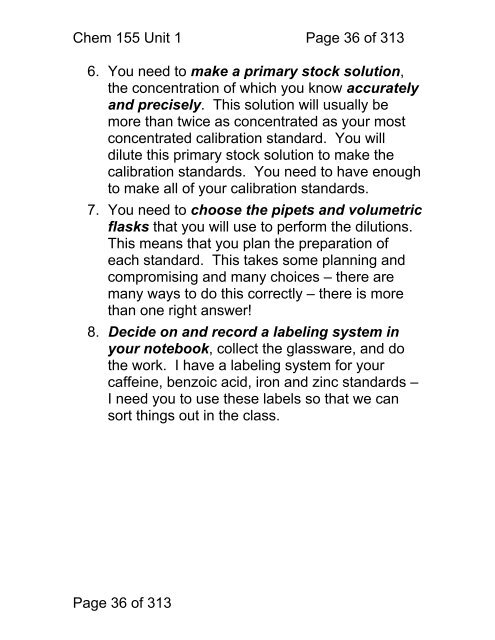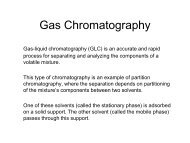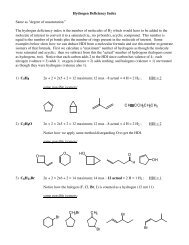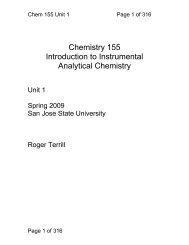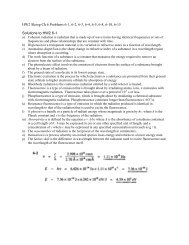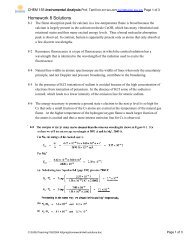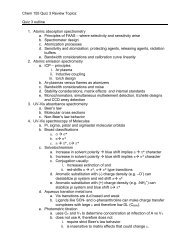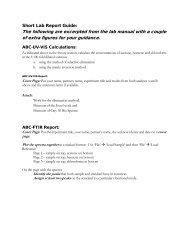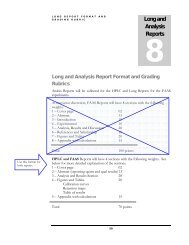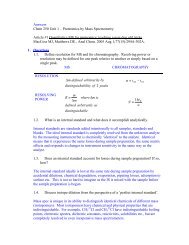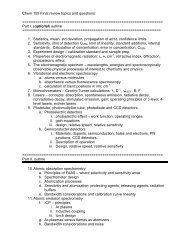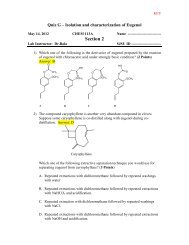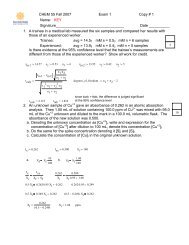Chemistry 155 Introduction to Instrumental Analytical Chemistry
Chemistry 155 Introduction to Instrumental Analytical Chemistry
Chemistry 155 Introduction to Instrumental Analytical Chemistry
You also want an ePaper? Increase the reach of your titles
YUMPU automatically turns print PDFs into web optimized ePapers that Google loves.
Chem <strong>155</strong> Unit 1 Page 36 of 3136. You need <strong>to</strong> make a primary s<strong>to</strong>ck solution,the concentration of which you know accuratelyand precisely. This solution will usually bemore than twice as concentrated as your mostconcentrated calibration standard. You willdilute this primary s<strong>to</strong>ck solution <strong>to</strong> make thecalibration standards. You need <strong>to</strong> have enough<strong>to</strong> make all of your calibration standards.7. You need <strong>to</strong> choose the pipets and volumetricflasks that you will use <strong>to</strong> perform the dilutions.This means that you plan the preparation ofeach standard. This takes some planning andcompromising and many choices – there aremany ways <strong>to</strong> do this correctly – there is morethan one right answer!8. Decide on and record a labeling system inyour notebook, collect the glassware, and dothe work. I have a labeling system for yourcaffeine, benzoic acid, iron and zinc standards –I need you <strong>to</strong> use these labels so that we cansort things out in the class.Page 36 of 313


